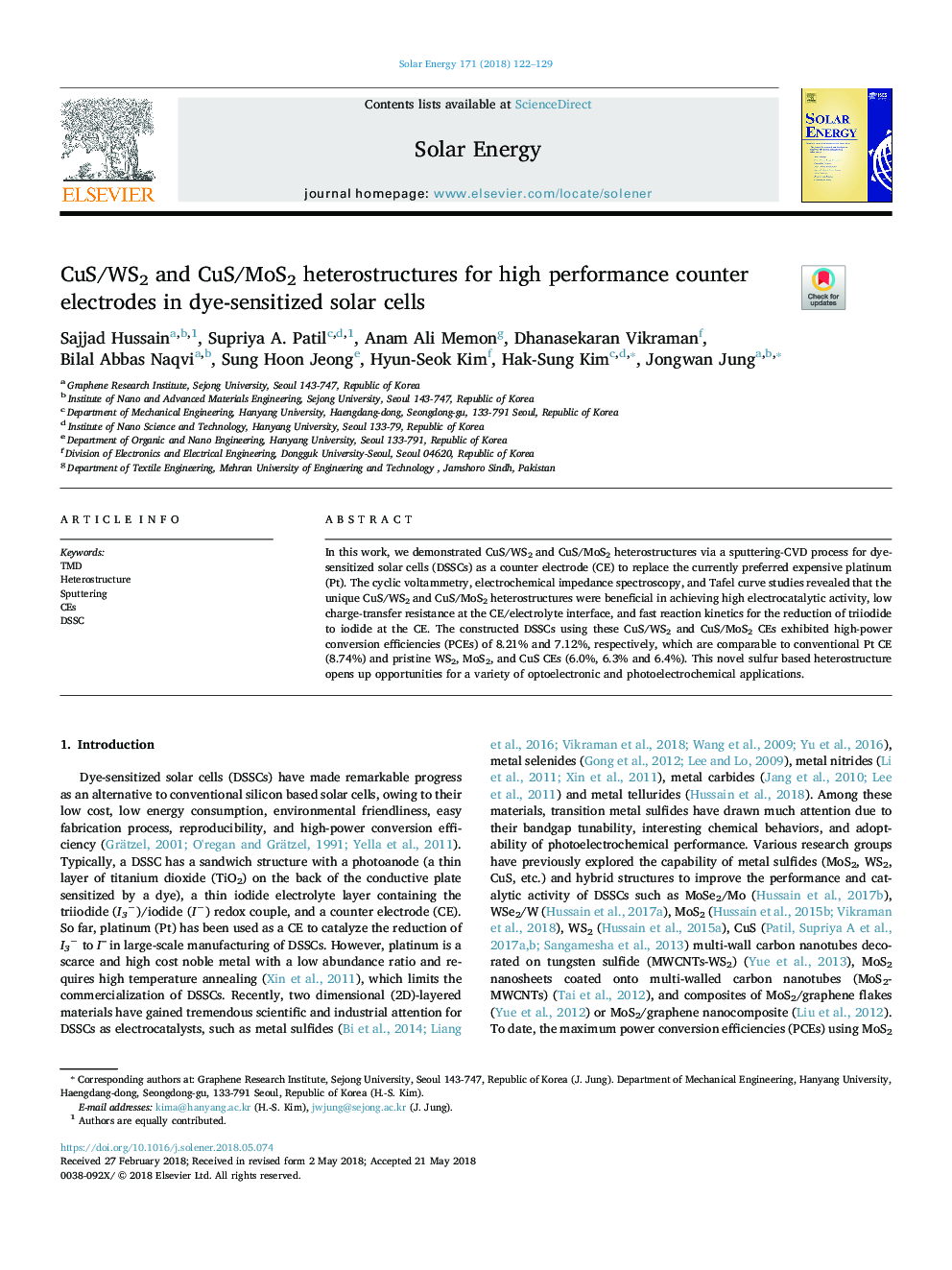| Article ID | Journal | Published Year | Pages | File Type |
|---|---|---|---|---|
| 7934969 | Solar Energy | 2018 | 8 Pages |
Abstract
In this work, we demonstrated CuS/WS2 and CuS/MoS2 heterostructures via a sputtering-CVD process for dye-sensitized solar cells (DSSCs) as a counter electrode (CE) to replace the currently preferred expensive platinum (Pt). The cyclic voltammetry, electrochemical impedance spectroscopy, and Tafel curve studies revealed that the unique CuS/WS2 and CuS/MoS2 heterostructures were beneficial in achieving high electrocatalytic activity, low charge-transfer resistance at the CE/electrolyte interface, and fast reaction kinetics for the reduction of triiodide to iodide at the CE. The constructed DSSCs using these CuS/WS2 and CuS/MoS2 CEs exhibited high-power conversion efficiencies (PCEs) of 8.21% and 7.12%, respectively, which are comparable to conventional Pt CE (8.74%) and pristine WS2, MoS2, and CuS CEs (6.0%, 6.3% and 6.4%). This novel sulfur based heterostructure opens up opportunities for a variety of optoelectronic and photoelectrochemical applications.
Keywords
Related Topics
Physical Sciences and Engineering
Energy
Renewable Energy, Sustainability and the Environment
Authors
Sajjad Hussain, Supriya A. Patil, Anam Ali Memon, Dhanasekaran Vikraman, Bilal Abbas Naqvi, Sung Hoon Jeong, Hyun-Seok Kim, Hak-Sung Kim, Jongwan Jung,
